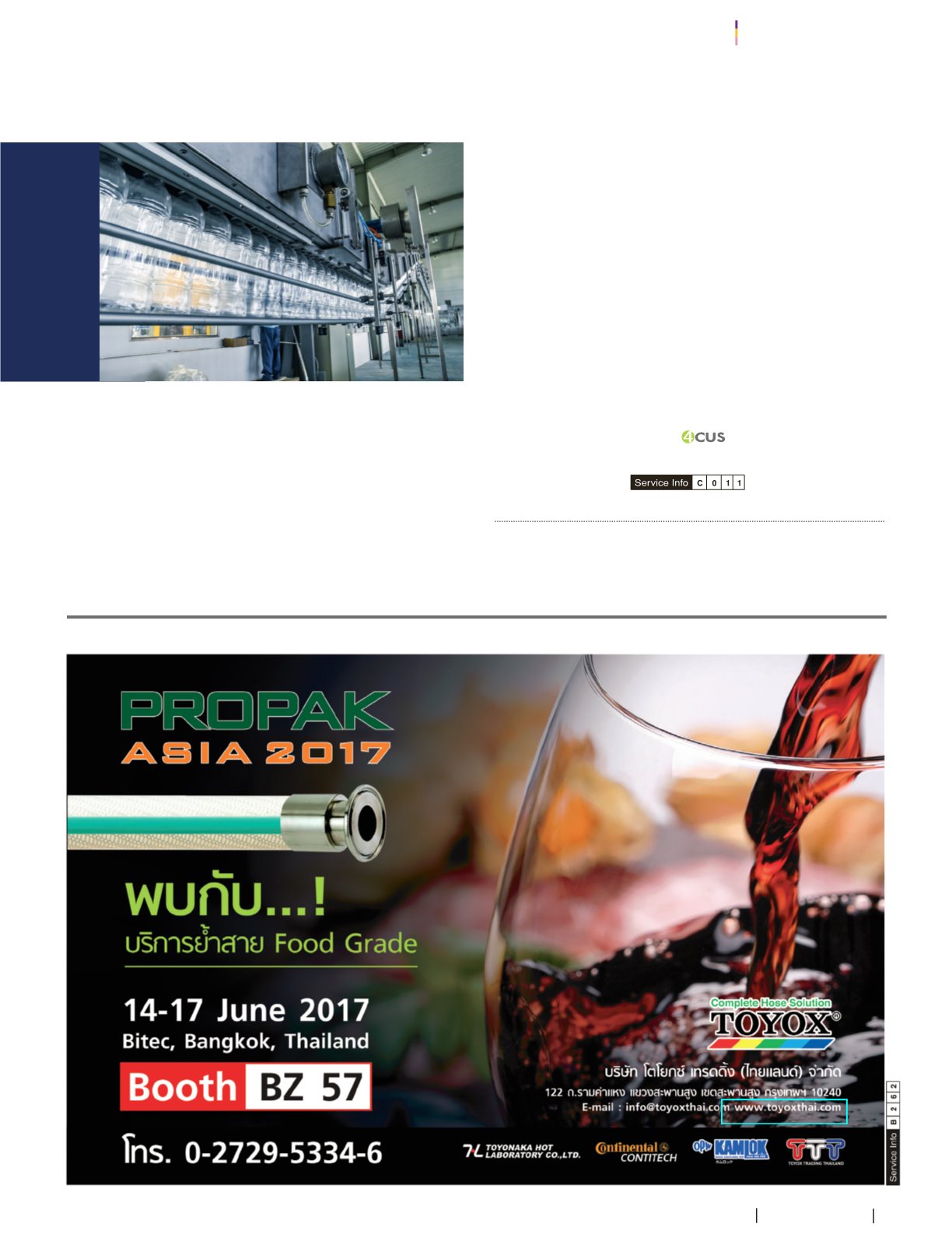
85
JUN2017 FOOD FOCUS THAILAND
STRONG
QC & QA
Reference
tor-water-quality
Water Treatments...
Once the water quality has been determined to be unsuitable for the
target application, whether it is due to the supply’s source, existent
impuritiesor theoperatingconditions, thereareanumberof technologies
available to improve the quality and safety of the water. Treatment
methodscanbebasedoneitherchemicalornon-chemical technologies.
The chemical methods use oxidizing and nonoxidizing biocides for
microbiological and corrosion control.
Someof these techniqueshavebeenavailable foranumberofyears,
but have recently been improved. Membrane systems, like reverse
osmosis, are also continuing to evolve and now are able to recover as
highas 98percent. This greatly reduces theamount of water wasted in
rejectstreams,aswellas lowers theamountofwastewater tobe treated.
UVC radiationcanbeused todisinfectwaterbydeactivatingbacteria.
TheUVC light canalsodetermine theeffectivenessof cleaningbetween
changeovers, even inequipment utilizing clean-in-place (CIP) systems.
TheUV spectroscopy canmeasure the bacterial concentration in rinse
water, allowing operators to optimize the cleaning process, as well as
the amount of sanitation chemicals used.
So, the treatment approach selected should be based onwhat the
processor is trying to achieve, whether it is improving the sustainability
of the plant, reducing operating costs and/or maintaining the ability to
operate inwater-stressed areas.


